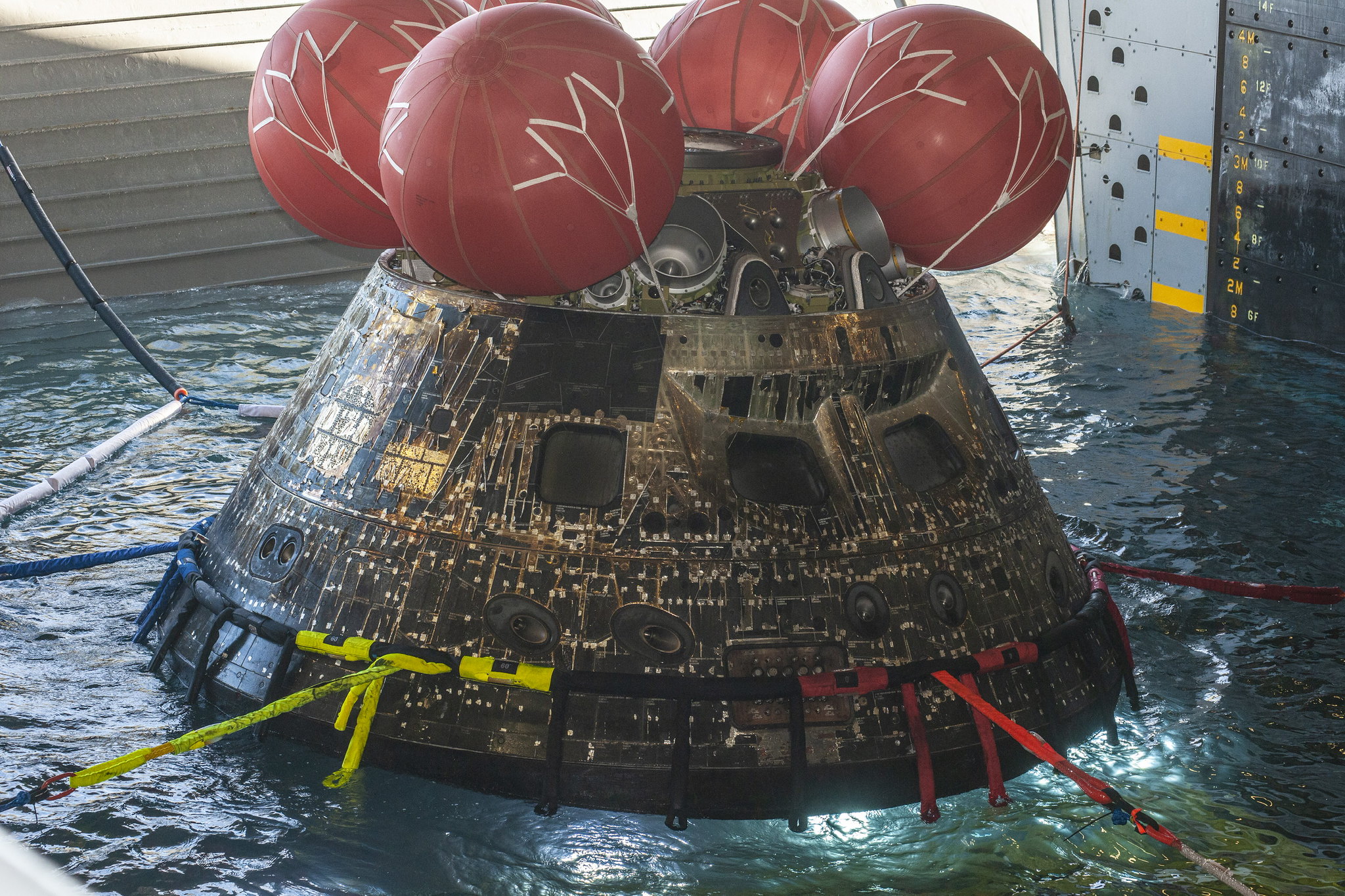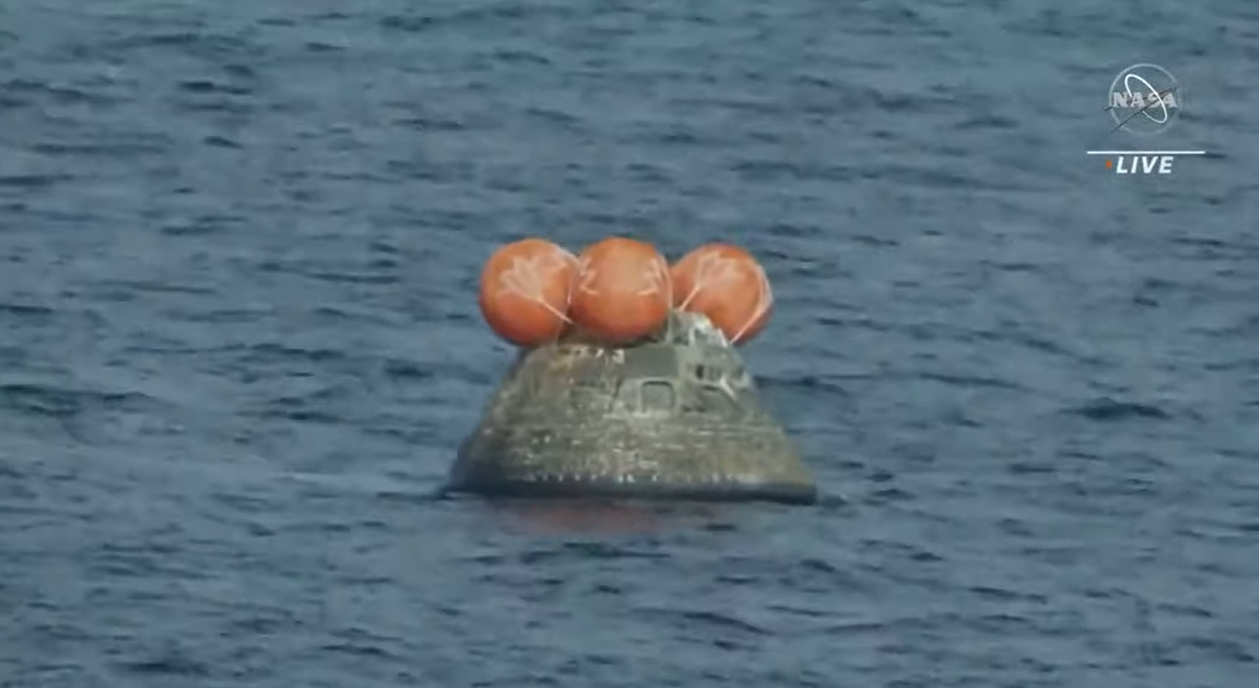
NASA's Artemis 1 Orion spacecraft has made it back to terra firma.
Orion reached Naval Base San Diego on Tuesday (Dec. 13) aboard the USS Portland, the U.S. Navy recovery ship that fished the capsule out of the Pacific Ocean on Sunday (Dec. 11) following its successful splashdown.
The spacecraft will be offloaded from the Portland on Wednesday (Dec. 14) and will then begin an overland trek to NASA's Kennedy Space Center (KSC) in Florida, KSC officials said via Twitter on Tuesday.
In photos: 10 greatest images from NASA's Artemis 1 mission
That will be a homecoming for Orion, which lifted off from KSC atop a Space Launch System (SLS) megarocket on Nov. 16, kicking off the uncrewed Artemis 1 mission.
Everything went well on the shakeout cruise; the SLS sent Orion on its way to the moon as planned, and the capsule checked off all of its desired milestones in deep space.
Orion arrived in lunar orbit on Nov. 25, departed on Dec. 1 and headed for Earth on Dec. 5 by conducting a long engine burn during a close flyby of the moon. The spacecraft returned to its home planet on Sunday, splashing down softly under parachutes about 100 miles (160 kilometers) west of Mexico's Baja Peninsula.
Get the Space.com Newsletter
Breaking space news, the latest updates on rocket launches, skywatching events and more!

Once Orion arrives at KSC, Artemis 1 team members will give it a thorough going-over, assessing how the spacecraft and its many subsystems held up in deep space and the harrowing return trip through Earth's atmosphere.
Technicians will also remove some hardware from the capsule for processing and reuse on Artemis 2, the next mission in NASA's Artemis program of lunar exploration.
Artemis 2 is scheduled to launch astronauts around the moon in 2024. If all goes well with that flight, Artemis 3 will aim to put boots down near the lunar south pole a year or two later, using a SpaceX Starship vehicle as a lander.
NASA aims to build a research base in the south polar region, which is thought to harbor lots of water ice. The agency also plans to build a small space station in lunar orbit called Gateway, which will serve as a jumping-off point for missions to the surface, both crewed and uncrewed.
The first components of Gateway are scheduled to launch atop a SpaceX Falcon Heavy rocket in late 2024.
Mike Wall is the author of "Out There" (Grand Central Publishing, 2018; illustrated by Karl Tate), a book about the search for alien life. Follow him on Twitter @michaeldwall. Follow us on Twitter @Spacedotcom or Facebook.
Join our Space Forums to keep talking space on the latest missions, night sky and more! And if you have a news tip, correction or comment, let us know at: community@space.com.

Michael Wall is a Senior Space Writer with Space.com and joined the team in 2010. He primarily covers exoplanets, spaceflight and military space, but has been known to dabble in the space art beat. His book about the search for alien life, "Out There," was published on Nov. 13, 2018. Before becoming a science writer, Michael worked as a herpetologist and wildlife biologist. He has a Ph.D. in evolutionary biology from the University of Sydney, Australia, a bachelor's degree from the University of Arizona, and a graduate certificate in science writing from the University of California, Santa Cruz. To find out what his latest project is, you can follow Michael on Twitter.









